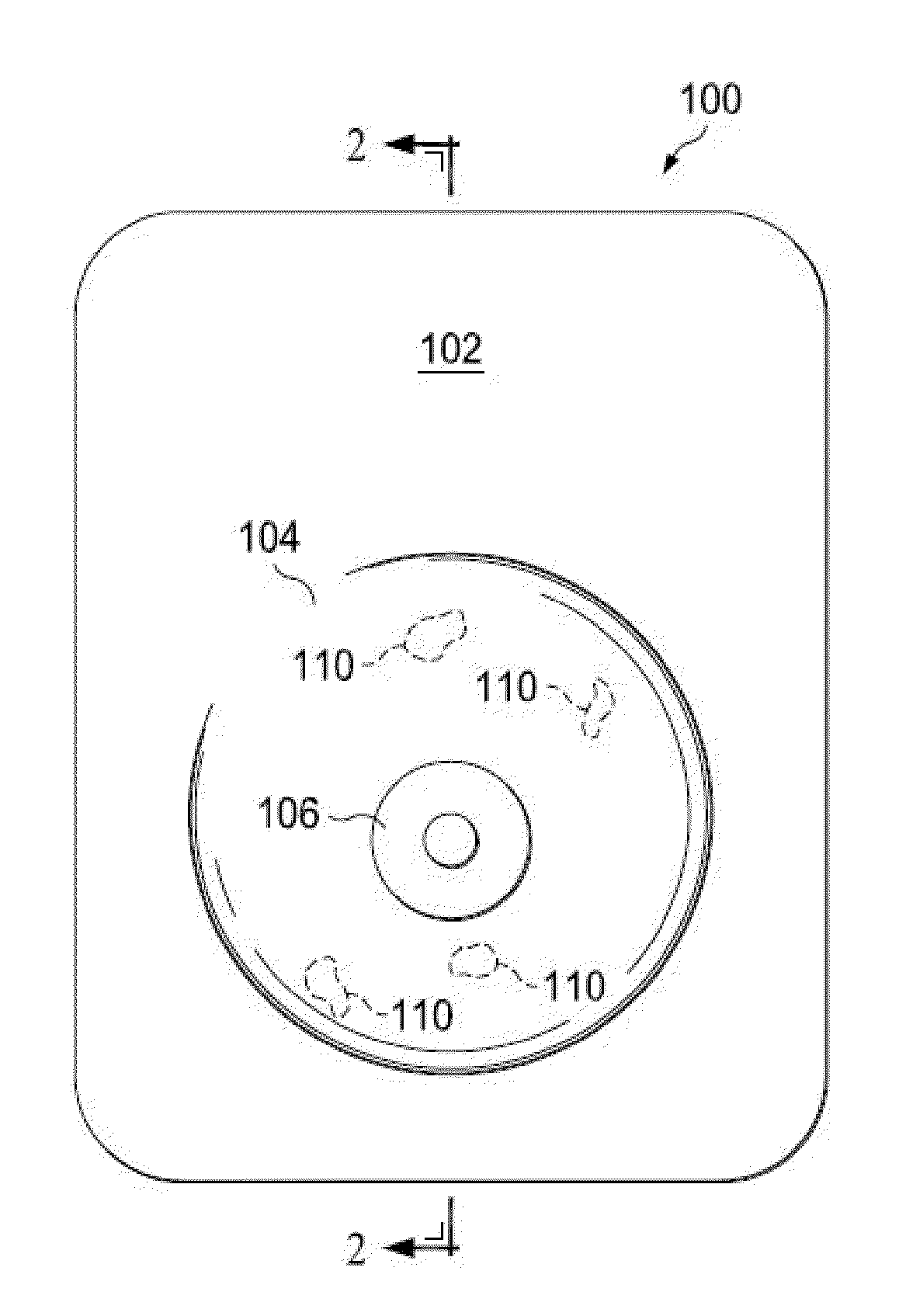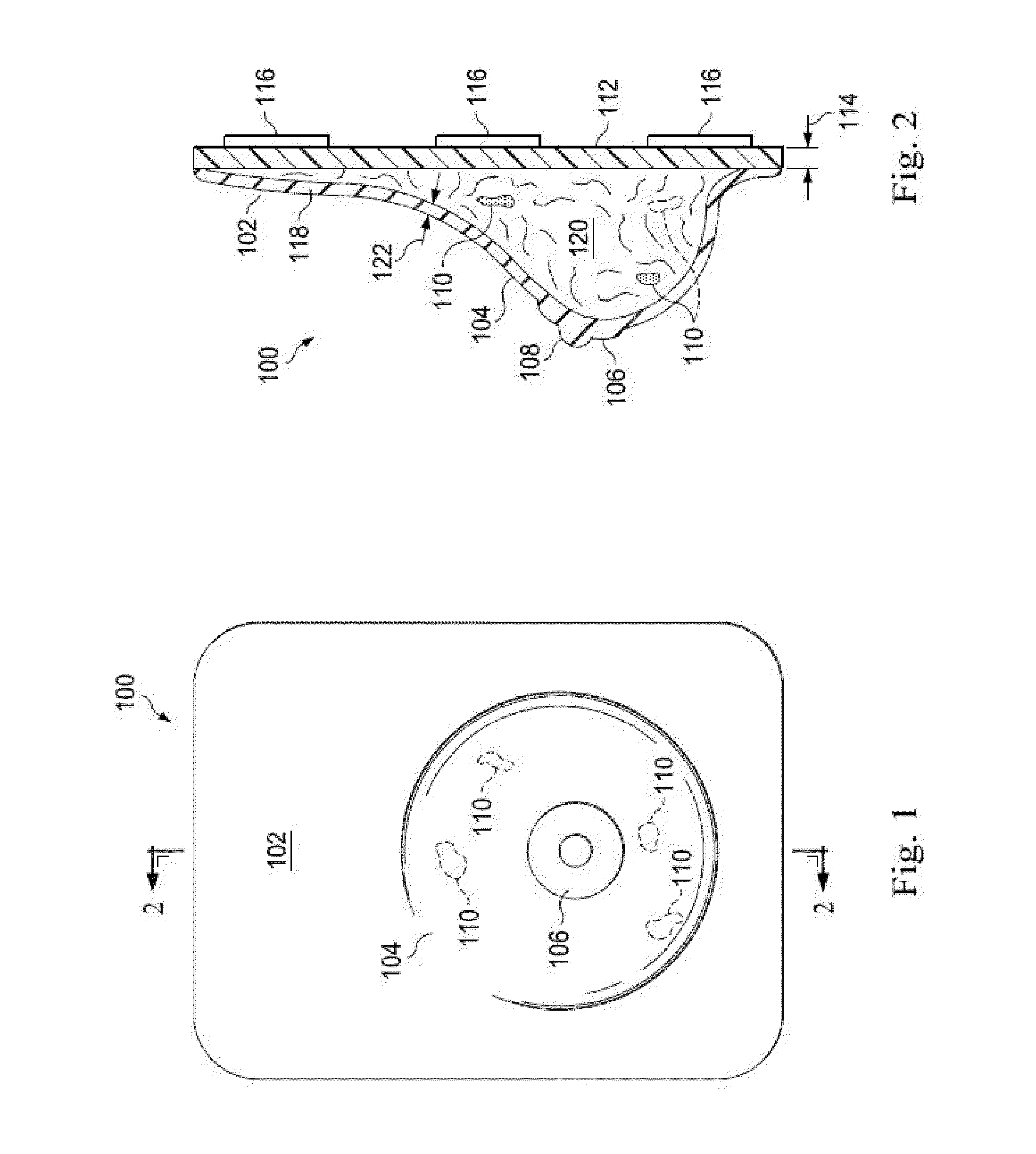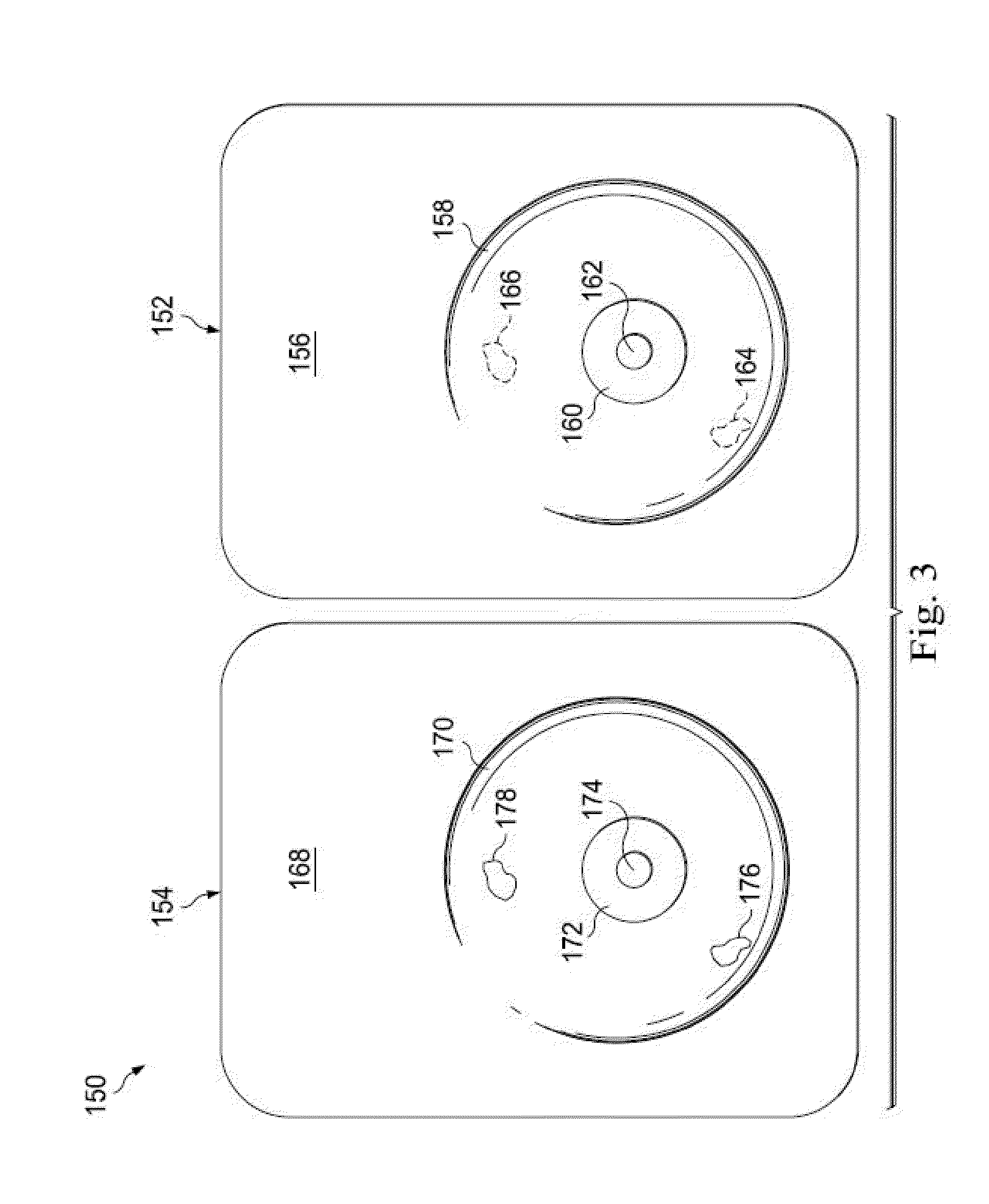Ultrasound Phantom Models, Materials, and Methods
a technology of ultrasonic phantoms and phantom cells, applied in the field of ultrasonic phantom models, materials, and methods, can solve the problems of insufficient in many respects, and achieve the effect of reducing the molecular weight, reducing the quantity of foam cells, and low cos
- Summary
- Abstract
- Description
- Claims
- Application Information
AI Technical Summary
Benefits of technology
Problems solved by technology
Method used
Image
Examples
example 1
Ultrasound Image—Target with Encapsulated Air
[0106]Referring to FIG. 35, shown therein is an ultrasound image of an ultrasound phantom according to one aspect of the present disclosure. In particular, FIG. 35 illustrates an ultrasound rendering of an ultrasound phantom comprised of 75% Factor II A341 and 25% LSR-05 and a SMOOTHON Dragon Skin target with encapsulated air. The target is approximately 5 mm×5 mm×10 mm in dimension. In that regard, each major marker on the image scale is 1 cm. The resulting ultrasound image is consistent with an ultrasound image of bone. The ultrasound rendering of FIG. 35 is a gray-scale representation of an actual ultrasound image obtained using a Bard Site-Rite 3 Surface Probe ultrasound machine.
example 2
Ultrasound Image—Target without Encapsulated Air
[0107]Referring to FIG. 36, shown therein is an ultrasound image of an ultrasound phantom similar to that of FIG. 35, but illustrating another aspect of the present disclosure. In particular, FIG. 6 illustrates an ultrasound image of an ultrasound phantom comprised of 75% Factor II A341 and 25% LSR-05 and a SMOOTHON Dragon Skin target without encapsulated air. The target is approximately 5 mm×5 mm×10 mm in dimension. Again, each major marker on the image scale is 1 cm and the resulting ultrasound image is consistent with an ultrasound image of bone. The ultrasound image of FIG. 36 is also a gray-scale representation of an actual ultrasound image obtained using a Bard Site-Rite 3 Surface Probe ultrasound machine.
example 3
Manufacturing Ultrasound Breast Simulator, Such as Breast Model 200 Described Above, with Medium Skin Tone
[0108]Manufacture of Dense masses (Material: Dragon Skin 10 Medium):
[0109]a. Measure 15 g of Part B, add 15 g Part A, 2 g URE-FIL 9
[0110]b. Mix and pour into silicone lump molds
[0111]c. Cure in a 100° C. Oven for 30 minutes
[0112]Breast Manufacture Pour 1 (Material: Silicone 99-255):[0113]a. Clean the glove molds and liberally apply mold release[0114]b. Measure 150 g Part B, add 8 drops (approximately 0.4 mL) FuseFX Light Skin, 8 drops (approximately 0.4 mL) FuseFX Tan Skin, 6 drops (approximately 0.3 mL) FuseFX Warm Rosy Skin, 150 g Part A[0115]c. Mix and Vacuum until all bubbles are removed[0116]d. Divide into equal volumes and pour into the left and right glove molds[0117]e. Immediately after pouring the silicone, fill an eye-dropper with water, and dispense three cysts in the right breast and one in the left. The cysts in the right breast are located in the lower, outer quadr...
PUM
| Property | Measurement | Unit |
|---|---|---|
| volume | aaaaa | aaaaa |
| volume | aaaaa | aaaaa |
| viscosity | aaaaa | aaaaa |
Abstract
Description
Claims
Application Information
 Login to View More
Login to View More - R&D
- Intellectual Property
- Life Sciences
- Materials
- Tech Scout
- Unparalleled Data Quality
- Higher Quality Content
- 60% Fewer Hallucinations
Browse by: Latest US Patents, China's latest patents, Technical Efficacy Thesaurus, Application Domain, Technology Topic, Popular Technical Reports.
© 2025 PatSnap. All rights reserved.Legal|Privacy policy|Modern Slavery Act Transparency Statement|Sitemap|About US| Contact US: help@patsnap.com



